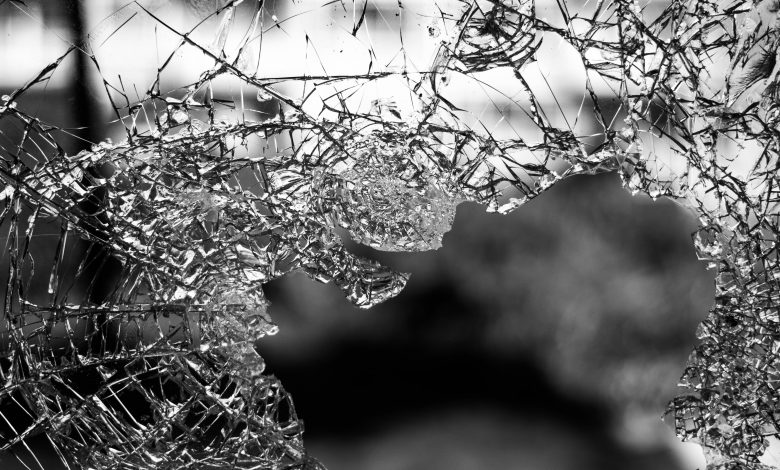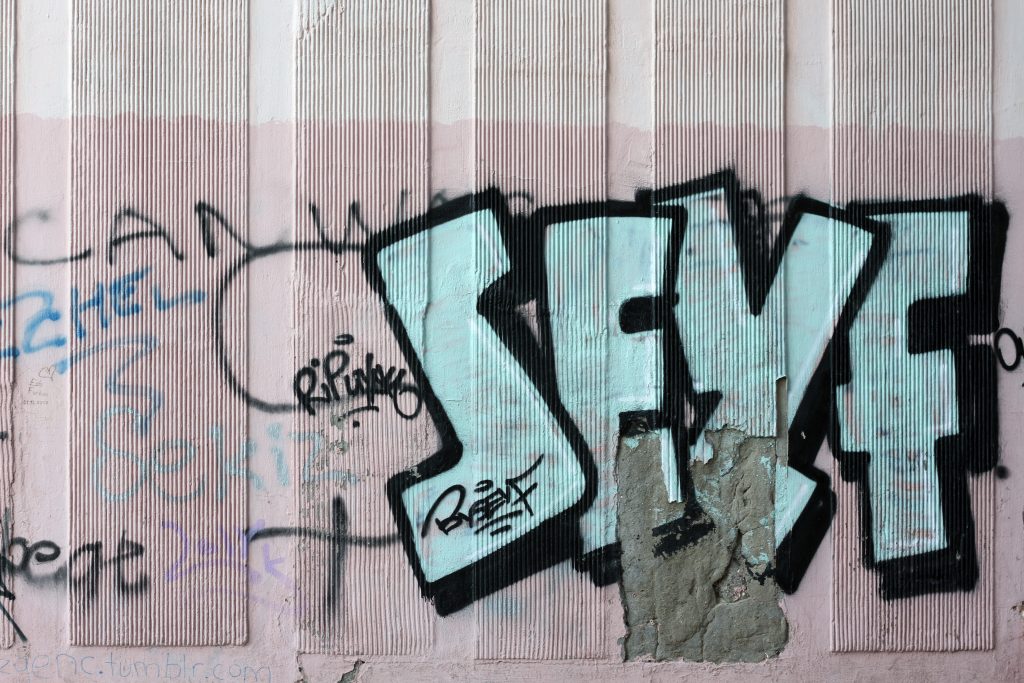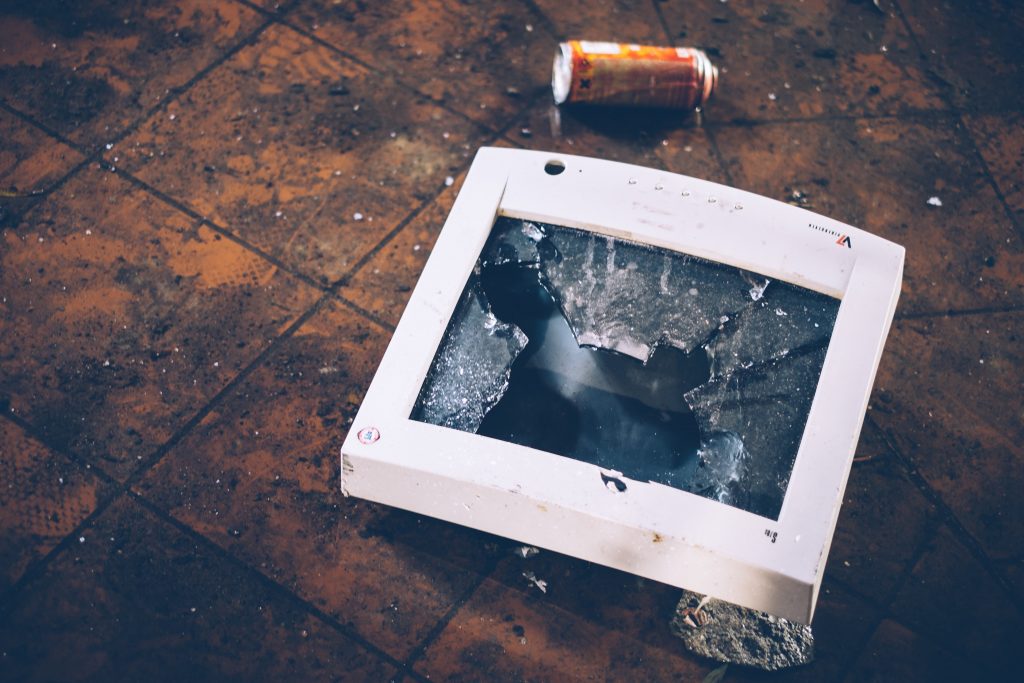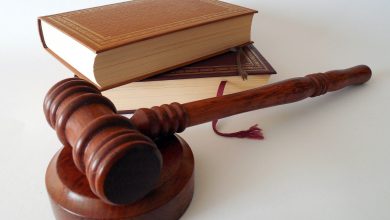What Is Criminal Mischief?

Damaging someone else’s property in any way without their permission amounts to criminal mischief, which is a crime. Though the exact laws will vary state-to-state, there are also federal laws regarding criminal mischief. Penalties will depend on the value of the item damaged and how much damage was caused. There are certain aspects that will have to be proven in order to get a guilty verdict, and arguing the truth of these aspects can lead to charges being dropped – or at least a lighter sentence. To help you make the best case for yourself, you may want to look into hiring a criminal defense lawyer.
What Is Criminal Mischief?
Criminal mischief occurs when someone intentionally causes damage to, breaks, defaces, alters, or destroys someone else’s property without their permission. On a federal level, one law defines someone guilty of criminal mischief as one who:
- “Damages tangible property of another purposely, recklessly, or by negligence in the employment of fire, explosives, or other dangerous means; or
- Purposely or recklessly tampers with tangible property of another so as to endanger person or property; or
- Purposely or recklessly causes another to suffer pecuniary loss by deception or threat.”
There’s a couple of aspects it establishes there. For one, you don’t necessarily have to have complete intent to commit criminal mischief. Just acting carelessly enough to be considered reckless and putting the item in harm’s way is enough for a charge. Additionally, being negligent and not taking proper precautions and safety measures when handling fire, explosives, and other dangerous items can amount to criminal mischief. Any behavior that one could reasonably expect to bring harm to others or others’ property can be enough to fulfill the intent factor here. However, a true accident, when it’s decided that the defendant was acting reasonably, won’t come with any charges. That third factor also points out that criminal mischief encompasses financial damage as well.
Some acts that are typically considered criminal mischief include:
- Vandalism
- Graffiti
- Breaking windows
- Tampering with a fire hose or emergency exit
- Setting off a smoke bomb
- Using explosives
- Putting a virus onto someone else’s computer
- Hacking into someone’s computer
- Tampering with a grave
- Removing signs
- Keying a car
- Any damage to private or public property, vehicles, businesses, schools, homes, or dwellings

Penalties for Criminal Mischief
Typically, the penalty will be dependent upon how much damage was done and the value of the damage, as well as the financial worth of the item damaged. Putting the lives of people at risk in the process is also an aggravating factor that could amount to elevated charges. As such, criminal mischief charges may range from misdemeanors to felonies.
A criminal mischief conviction may come with time either in jail, with a misdemeanor, or prison, for a felony. Misdemeanor jail time likely will not go over a year, while prison time may reach five years or more. However, the typical, less severe criminal mischief charge with damage under a $100 will likely only come with 30 to 60 days in jail.
They will also likely be charged with a fine. In fact, this is a much more common punishment than even jail time when it comes to criminal mischief, as it’s a property damage crime and thus can be easily given a financial penalty equal to its severity. For a first time offense, it’s likely that the defendant will get off with only paying a fine. For a misdemeanor, again, depending on the worth of the damages, it will likely come to fine of anywhere from $100 to $1,000. A felony charge can see fines anywhere from $500 to $10,000 in cases with high valued items at stake. This fine may also come with restitution, which is money paid to the victim for the damages they suffered, while fines go to the state charging the defendant. This will likely be equal to whatever dollar amount they have decided the damage the defendant caused was.
Either instead of or in addition to these penalties, the defendant may be assigned probation. This means the defendant must not commit any other crimes, use drugs or alcohol, or meet with certain individuals, as well as be required to find and maintain employment, check in with a probation officer, and attend all court dates.
In addition to considering the amount of damage done and if people were put into harm’s way, the judge will also review the defendant’s previous record, and a history of other criminal acts, and especially of other criminal mischief charges, can come with a more severe penalty. Repeat offenders are more likely to face jail time.
Defenses for Criminal Mischief
The first defense to look into is that of whether or not the defendant had intent. This is where it gets tricky, however, as like discussed earlier, intent doesn’t necessarily mean that the defendant meant to damage the property in question. This will involve showing that the defendant truly accidentally caused the damage and that they were taking reasonable actions. However, if it is determined that the defendant should have expected or did know that their actions would result in the damage of someone’s property, this defense won’t be valid.
Another way to sort of beat the intent aspect is showing that the defendant’s actions were just self-defense. But the actions must be deemed reasonable for the situation.
They may also want to provide proof that the damage existed prior to their actions, and therefore, they shouldn’t be held responsible. This may also involve showing how their actions couldn’t have reasonably caused the damage.
Since it’s required that the crime happen against the property owner’s will, the defendant may be able to prove that the victim actually gave them permission to either perform the action or directly damage the item. They may even be able to show how they reasonably, even if mistakenly, believed permission was given.
Another defense the defendant could consider is arguing that they have the wrong perpetrator. The defendant should try to verify an alibi and find reasons to provide doubt that they are indeed the person who committed the crime.
If the defendant’s innocence can’t be proven, then they can at least look to lower the consequences. This may involve arguing for a lower value of the items damaged.

Federal Criminal Mischief Laws
In federal law, 18 U.S. Code §?1361-1369 outlines what is considered criminal mischief in regards to government property, which can often elevate a charge to a felony. It also provides minimum and maximum punishments for certain crimes and any aggravating circumstances. These laws classify crimes involving the following:
- Government property or contracts: This makes purposefully damaging any type of government property, as well as simply attempting to cause such damage, a crime. This also includes items that are in the process of being manufactured for the government. It’s only a misdemeanor when the damage doesn’t exceed $1,000, meaning jail time will be less than a year, and it may come with a fine. When the damage in question is over $1,000, making it a felony, it comes with a possible fine and up to ten years in prison.
- Communication lines, stations, or systems: Damage to any “works, property, or material of any radio, telegraph, telephone or cable, line, station, or system, or other means of communication” that are controlled or operated by the U.S. is punishable by this law. It also includes these items when they are being manufactured, interfering with the use of any of these items, delaying communication across any of these items, or attempts to do any of these actions. It is punishable by a fine, up to ten years in prison, or both.
- Buildings or property within special maritime and territorial jurisdiction: This basically outlaws damage on any government property, as well as just the attempt to cause damage. It can come with up to five years in prison and a fine. However, if they damaged a dwelling or someone’s life was put into danger, that prison sentence can reach 20 years.
- Interference with foreign commerce by violence: Using or attempting to use fire and explosives in order to prevent or hinder exportation from the U.S. for foreign countries by damaging the items or their location is a crime under this law. It’s punishable by a possible fine and up to twenty years in prison.
- Tampering with consumer products: In these cases, the defendant has tampered with a product or used misleading labels with reckless disregard for the safety of others, specifically those products that affect interstate or foreign commerce. It can come with up to ten years in prison and a fine, but if serious injury or death occurs, they may be facing up to twenty years or life.
- Destruction of an energy facility: As it sounds, this involves the destruction of energy facilities. Specifically, when the damage is over $5,000, it can come with a five year prison sentence and a fine. But when the damage exceeds $100,000, it’s punishable by up to a fine and twenty years. If a death occurs, they can face life in prison or the death penalty.
- Interference with the operation of a satellite: Someone who hinders the operation or transmission of a communications or weather satellite may receive ten years in prison and a fine.
- Harming animals used in law enforcement: Intentionally harming a law enforcement animal, a dog or a horse, can come with a year jail sentence. If the animal is permanently disabled or disfigured, that can increase to up to ten years in prison.
- Destruction of veterans’ memorials: Attempting to or succeeding in damaging or destroying any type of memorial commemorating a service member of the armed forces is a crime punishable by a fine and up to a ten year prison sentence.

State Criminal Mischief Laws
Laws will vary state to state, though the basic idea of criminal mischief stands, even if it isn’t always referred to as criminal mischief exactly. The biggest differences will lay in specific crimes listed, degrees of criminal mischief, and the penalties that accompany them.
Connecticut
Connecticut’s law consists of 1st, 2nd, 3rd, and 4th degree criminal mischief, and they place particular weight on interfering with public property:
- First degree: A Class D felony, criminal mischief in the first degree is punishable by one to five years in prison and a fine of up to $5,000. It involves:
- intentionally causing property damage exceeding $1,500 worth
- intentionally damaging or tampering with public utility, transportation, power, or communication property, which causes an interruption in service or requiring repair
- intentionally damaging electronic monitoring equipment belonging to the state of Connecticut
- intentionally tampering with any property owned by the state, city, or an individual for police or fire department use, including property for alarm purposes, telecommunication systems, emergency medical or fire dispatch systems, fire hydrants, fire extinguishers, and any other fire suppression equipment
- Second degree: Second degree criminal mischief involves damage worth over $250. It also includes damaging or tampering with public utility, transportation, power, or communication property, causing only a risk of interruption in service or need for repair. As only a Class A misdemeanor, this comes with up to a year in jail and up to a $2,000 fine.
- Third degree: This Class B misdemeanor occurs when the defendant acts intentionally or recklessly and causes damage to someone else’s property, as well as if they tamper with the property or use negligence to put the property at risk of being damaged. This can result in up to six months in jail and possibly $1,000 in fines.
- Fourth degree: As a Class C misdemeanor, intentionally or recklessly damaging, tampering, or removing a fire hydrant, hydrant system, fire alarm, smoke detector, of fire suppressant is punishable by up to a $500 fine and three months in jail.
Texas
Texas criminal mischief law states criminal mischief is when, without the owner’s consent, the defendant intentionally destroys someone’s tangible property, tampers with their tangible property and causes financial damages or substantial inconvenience, or makes any type of marking or drawing on someone else’s property. Charges start off at a Class C misdemeanor and work up to a first degree felony:
- Class C misdemeanor: For damages less than $100, it’ll just be a Class C misdemeanor, which is punishable by only a $500 fine.
- Class B misdemeanor: Damage worth $100 to $750 may come with a 180 day jail sentence, as well as up to $2,000 in fines.
- Class A misdemeanor: This charge is for damage $750 to $2,500 or when the damage hinders public water supply. This can come with up to a year in jail and a possible up to $4,000 fine.
- State jail felony: State jail felonies are punishable by 180 days to two years in a state jail and fines as high as $10,000. This charge for criminal mischief includes:
- damage worth $2,500 to $30,000
- damage to fences used for livestock and game animals
- damage to a habitable structure by firearms or explosives
- damage that affects public transportation, gas, power, communication, or other services
- Third degree felony: Third degree felony criminal mischief involves losses of $30,000 to $150,000, as well as when a firearm kills one or more livestock. The defendant faces two to ten years in prison and up to $10,000 in fines.
- Second degree felony: With a penalty of two to 20 years in prison and up to a $10,000 fine, this includes damages valued at $150,000 to $300,000.
- First degree felony: The most serious charge, this is for all damages exceeding $300,000. The prison sentence can be five to 99 years, and the fines may reach $10,000.
New York
All New York laws require that intent be proven for a criminal mischief charge. New York’s criminal mischief laws are in the 1st, 2nd, 3rd, and 4th degrees:
- First degree: Criminal mischief in the first degree is when the damage occurs as a result of the use of explosives. This Class B felony is punishable by up to 25 years in prison.
- Second degree: If the damage is valued at over $1,500, it will be a Class D felony, which can come with a seven year prison sentence.
- Third degree: When the defendant already has three convictions for criminal mischief and they break into a vehicle in order to steal property, or when the damage exceeds $250, it’s a Class E felony with up to four years in prison.
- Fourth degree: This Class A misdemeanor comes with up to a year in jail and a $1,000 fine. Criminal mischief in the first degree is when someone:
- intentionally damages someone else’s property
- participates in the destruction of an abandoned building
- damages property exceeding $250
- disables a communication device when someone is attempting to seek emergency assistance



